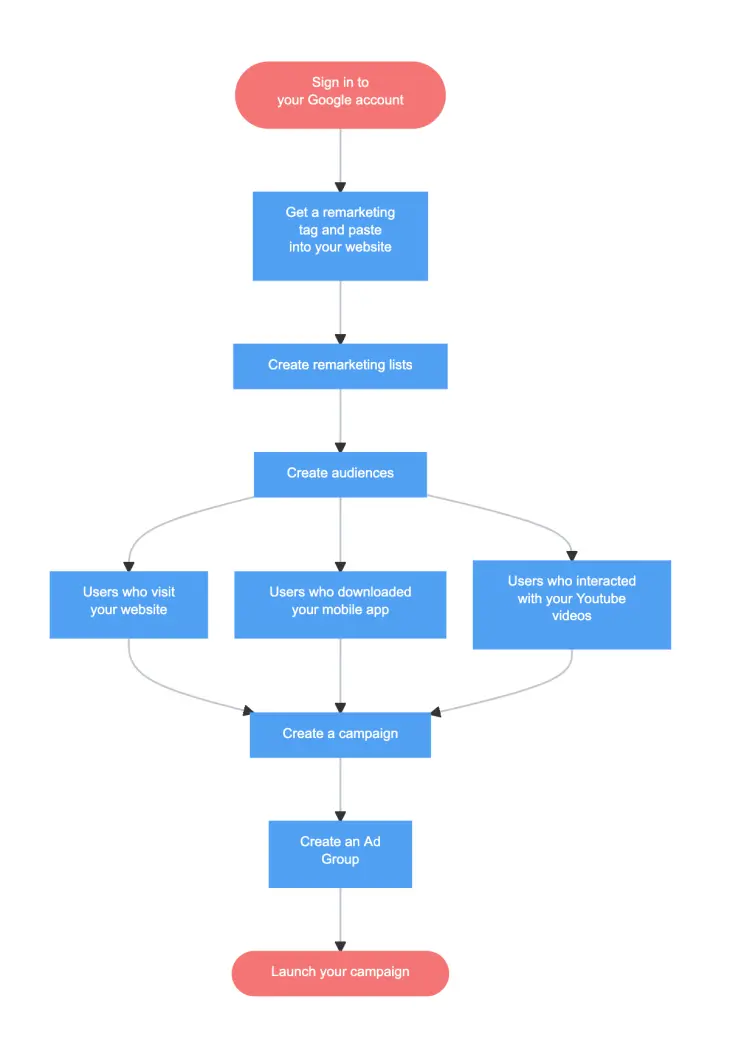The flowchart starts with signing in to a Google account. First, we take the remarketing tag from Google and paste it into the website. After this, Google saves the information about users who visit the page. Then, we create remarketing lists with the audiences based on particular user behavior, such as users who visit your website, users who downloaded your mobile app, those who interacted with your videos. After we choose the audiences, we create a campaign. Before launching the campaign, we should create an ad group for A/B testing.

Edit this diagram in Gleek
Google ads remarketing process diagram code in Gleek
Sign in to your Google account:queue
Sign in to your Google account–>Get a remarketing tag and paste into your website
Get a remarketing tag and paste into your website–>Create remarketing lists
Create remarketing lists–>Create audiences
Create audiences–>Users who visit your website
Create audiences–>Users who downloaded your mobile app
Create audiences–>Users who interacted with your Youtube videos
Users who visit your website–>Create a campaign
Users who downloaded your mobile app–>Create a campaign
Users who interacted with your Youtube videos–>Create a campaign
Create a campaign–>Create an Ad Group
Create an Ad Group–>Launch your campaign:queue
About Flowcharts
A flowchart, or flow chart, is a type of diagram that shows a step-by-step view of a process. Flowcharts document the tasks and decisions needed to achieve a specific goal. A basic flowchart is easy to make and understand. Businesses, engineers and software designers often use flowcharts to diagram their ideas.
Similar flowchart examples
Performance marketing strategy flowchart
Social media system context diagram